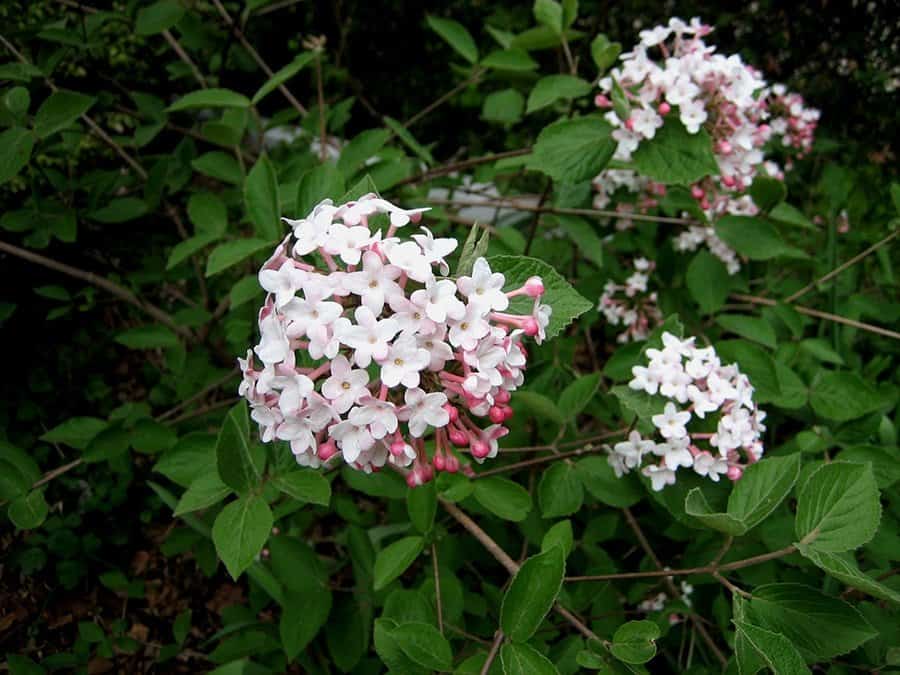
Now is a good time to get ahead of viburnum leaf beetle devastation that takes place in late spring. Honestly, I’ve never seen an insect so voracious as viburnum beetles (Pyrrhalta viburni). Well, maybe the tomato hornworm, on an ambitious day. This examination and pruning process can be done during March and early April, when the egg cases swell and are easier to see on the shrubs.
If you’ve ever had an invasion of viburnum beetles, you know how quickly they can reduce a shrub’s foliage to skeletonized remains. Usually the shrub doesn’t live through the third year of beetle-feeding frenzy.
Mother viburnum beetles lay their eggs in late summer through first frost on the undersides of young twig ends. They excavate a shallow depression, insert the eggs and seal them in with excrement. There are usually several egg deposits in a straight line. (A single female viburnum beetle can lay up to 500 eggs. A horrible thought!) The eggs hatch the following May, and larvae will begin to feed. By examining the young twigs, I can simply prune out, collect and dispose of potential hordes of these critters.
Fortunately, it’s possible to entirely avoid this problem by planting viburnums the beetles aren’t attracted to. The beetles seem to have quite particular appetites for certain viburnum species. Of all my viburnums, only the wayfaring tree (V. lantana) draws attention from the beetles. Despite close proximity, other viburnums in the garden are untouched. This is a list of viburnum species and their resistance or vulnerability to viburnum beetles:
|
Preferred host |
European highbush cranberry (Viburnum opulus) |
|
Moderate damage |
Wayfaring tree (V. lantana) and Rafinesque viburnum (V. rafinesquianum) |
|
Slight injury |
arrowwood (V. dentatum) and American highbush cranberry (V. trilobum) |
|
Injury from adults under laboratory conditions |
maple-leafed viburnum (V. acerifolium) and nannyberry (V. lentago) |
Courtesy of Ontario Ministry of Agriculture, Food and Rural Affairs (http://www.omafra.gov.on.ca/english/crops/facts/vlb.htm#con)

Early June and my high bush cranberry is a totally stripped – a skeleton. Will the bush live? Should I cut it back? How far? If it lives, how do I avid a repeat performance by these beetles?
Hi Nancy,
You can see all kinds of pictures by doing google searches for both viburnum beetle and Pyrrhalta viburni. Click on the images results for pictures.
— Judith
Do you have pictures of the infected branches? It would be appreciated.